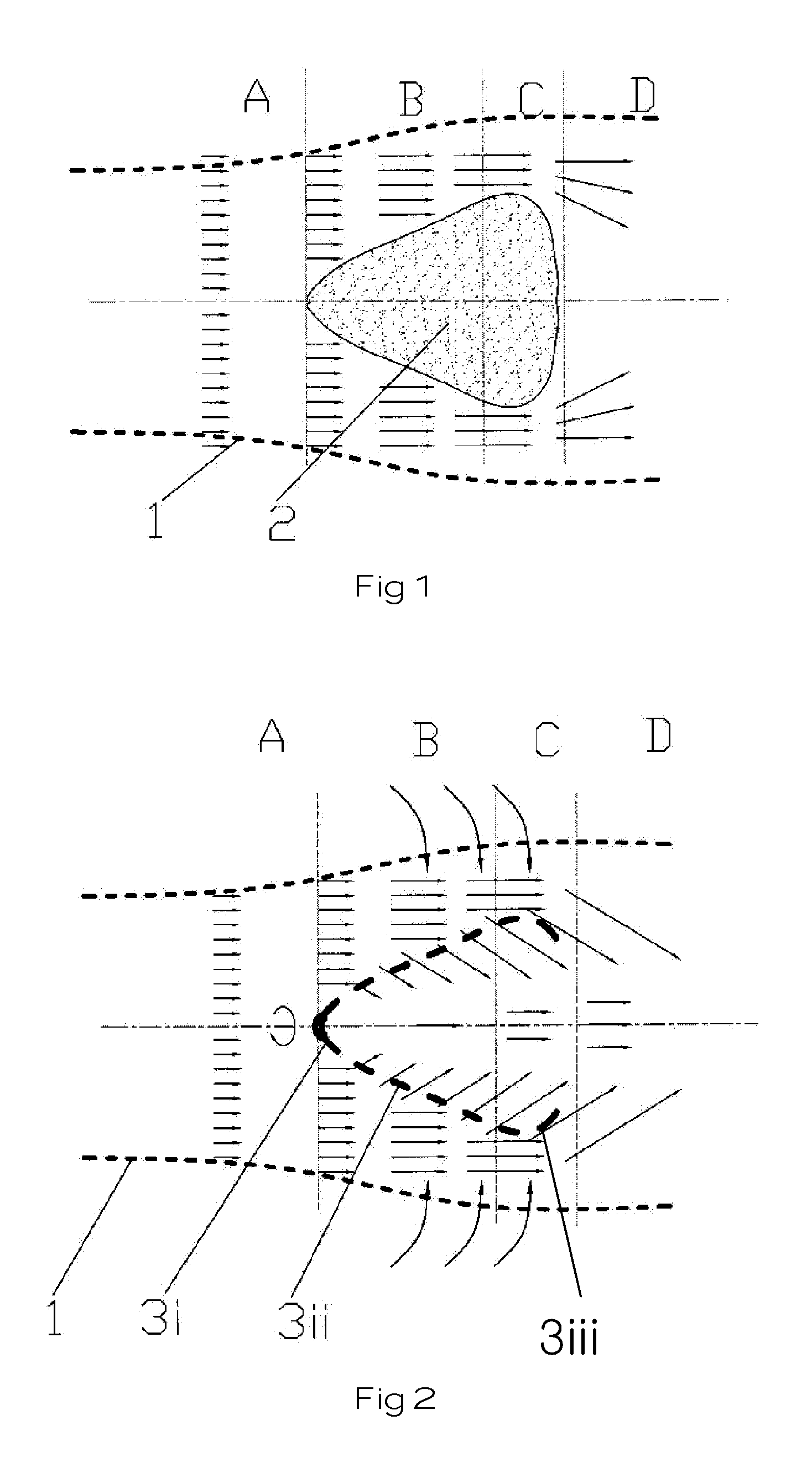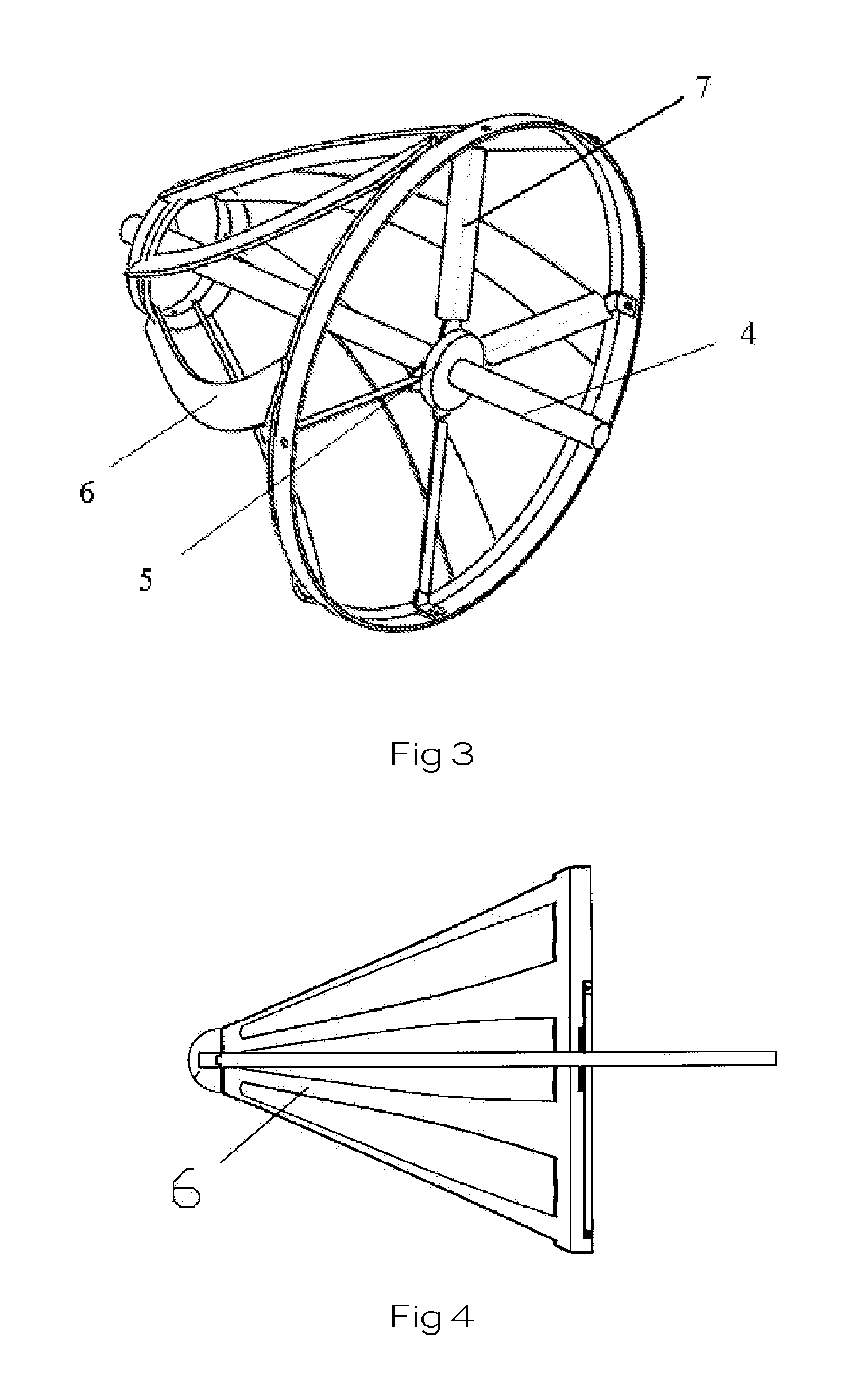Wind turbine rotor with venturi tube effect
a wind turbine and rotor technology, applied in the field of rotor systems, can solve the problems of low average wind energy utilization coefficient, high aerodynamic noise of blade cutting airstream, and many problems to be solved, so as to achieve the effect of high wind energy utilization efficiency, simple and efficient, and improved wind energy utilization efficiency
- Summary
- Abstract
- Description
- Claims
- Application Information
AI Technical Summary
Benefits of technology
Problems solved by technology
Method used
Image
Examples
Embodiment Construction
[0027]The following information can be known according to the common aerodynamics principles about the “Bernoulli principle” and particularly the “Venturi-tube effect”: A fluid increased in the flow speed will result in the fluid reduced in the pressure; the Venturi-effect tube is based on the Bernoulli principle, that is, the higher the flow speed of the fluid is, the lower the pressure is; the Venturi-effect tube principle is that the air pressure around the upper edge of the lee of an obstacle is relatively lower when the wind blows the obstacle, thus producing an adsorption effect and causing the airflow. The Venturi-effect tube principle is described as below: Constituting a compressed flow field for making the airstream “change from thick to thin”, so as to speed up the airstream; the accelerated flow speed will surely result in the reduced fluid pressure, making a “vacuum” area formed at the rear of the outlet of the Venturi-effect tube; this vacuum area will attract the surr...
PUM
 Login to View More
Login to View More Abstract
Description
Claims
Application Information
 Login to View More
Login to View More - R&D
- Intellectual Property
- Life Sciences
- Materials
- Tech Scout
- Unparalleled Data Quality
- Higher Quality Content
- 60% Fewer Hallucinations
Browse by: Latest US Patents, China's latest patents, Technical Efficacy Thesaurus, Application Domain, Technology Topic, Popular Technical Reports.
© 2025 PatSnap. All rights reserved.Legal|Privacy policy|Modern Slavery Act Transparency Statement|Sitemap|About US| Contact US: help@patsnap.com



